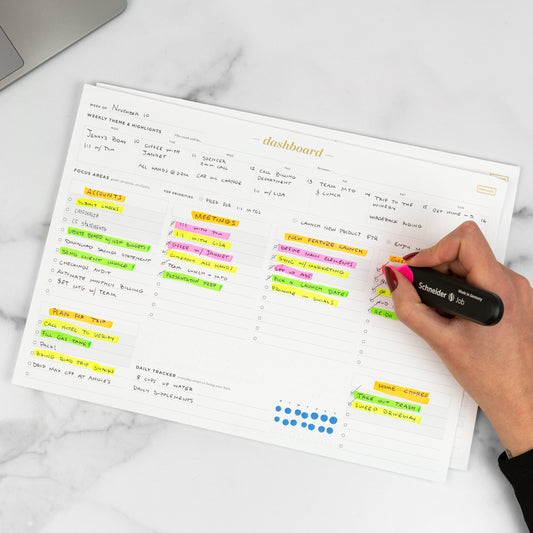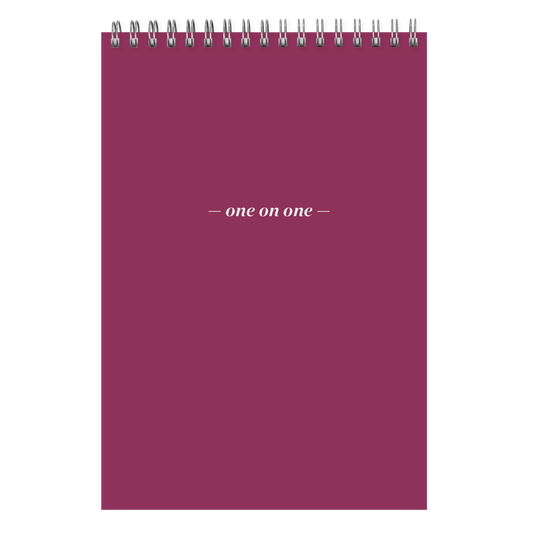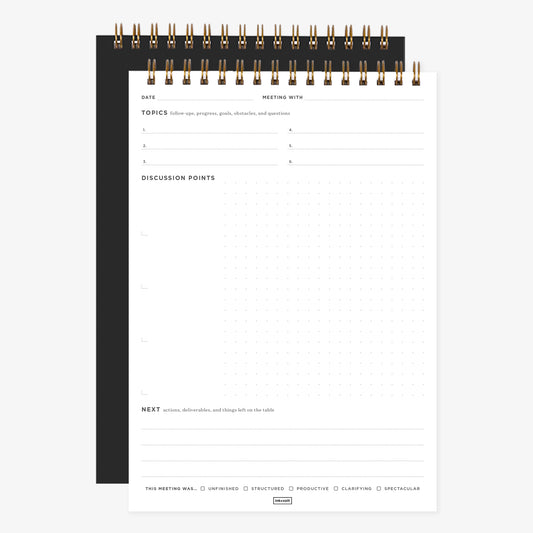Taking great notes is a huge part of being successful.
Why? Because being amazing at your job means having the right information to make important connections and decisions that get things done. Notes are your guide. They give you a place to store the many important details of your day, that you can refer to anytime to find the right answer.
I take a lot of notes.
One problem that I have, though, I have so many notes that sometimes it’s hard to go back and find the information I’m looking for quickly.
How can I make my notes work better for me? Here are some of the best ideas I’ve found for making your notes save you time and make you look smarter.
First, look at your note-taking style: what’s working?
For a long time, I was a transcript-style note-taker. Early in my career, I felt like I didn’t know anything, and so in any meeting I was in, I wrote down EVERYTHING that was said.
This worked for me for a few reasons:
I always had the context I needed when I read back through my notes, because I had literally recorded everything relevant. It helped me ask good questions. It also helped me to be the person with good answers later; if someone couldn’t remember something from a meeting, I could almost always look through my notes and get them the answer.
Here’s what didn’t work:
This style was also super inefficient. I didn’t really need to record everything, and reading through my notes or looking up an answer for someone took a lot of time.
(Also, writing throughout the entire meeting made it hard for me to contribute. I looked more like someone’s assistant than a real participant in the conversation.)
Before you can improve your system, you need to understand your system. There is no 100% perfect note-taking system that will work for everyone; what helps you stay organized might not work for me, and vice versa. So to start understanding your needs, answer these questions:
- What are the flaws in your current note-taking style?
- What are frustrations that regularly come up for you?
- What are the good things about your current style?
- What elements are making you more successful?
How to take (and keep!) notes that make a bigger impact
If you have trouble organizing your notes, then you need a better system.
The best notes are impactful, with no waste. The more unnecessary information you capture, the harder it is to find the important stuff when you need it. You want to focus on the things that matter and make them as crystal clear as possible.
Organizing your notes (over the course of a year, or the life-span of a project) will be so much easier if you have a uniform system as well. If all your notes are stored in the same place in the same format, they become endlessly easier to sort through for key information.
Whether it’s in your Volt Planner, favorite notebook, laptop, or folder on your desk, all your notes should go in one place and follow the same format. Here’s a sample format, if you don’t already have an efficient system for recording key information (and ONLY key information!):
WHO/WHEN/WHERE
If you go to a lot of meetings, it can be helpful to note the key details to make it easy to find the notes from a particular meeting later on. Some helpful things to note are who was there, when the meeting took place, and where it was.
Note this at the top of every single page — perhaps along with the meeting topic or goal — so that it’s easy to locate later on when you’re looking through all your notes.
GOAL/TOPIC
Every meeting (or brainstorming session, etc) should have a goal. Why are you there? What question do you want answered? This should be written down so that you can refer back to it throughout the meeting, as well as so you can quickly reference your notes later on when you are searching by topic.
THEMES
It can be helpful to record the general structure of the conversation to help you remember things later on. These aren’t necessarily super specific notes; instead, you’ll touch on ideas that came up that may be relevant for the future or that touch on the main goal but aren’t directly related to it.
KEY POINTS
If you already take notes in meetings, this is probably what you’re taking notes on. Key points include things like updates from other teams, major developments on the project, new input from a client, etc. However, this is where a lot of people waste time and space in their notes. This is not the most important part of your notes; this is just information recording and as such, should be done as efficiently as possible.
I find the best way to do this is to create a line or section for the person or department giving the update. Then record their update as efficiently as possible.
For example:
- Kate: finished designing planner pages, will send to team to review by 4/1
- Michael: got a call from client who wants to change website; sent a quote, waiting for confirmation
- Claire: showed 3 cover designs for new planners, team seemed to favor blue cover (vote: 6 to 2)
- Design team: hired a new designer who will start 3/30 to help offset Steve’s workload
The specifics of the key points should only be included as they pertain to moving the project forward or keeping you informed on the right questions to ask, people to contact, deadlines to meet, etc.
QUESTIONS
If you’re working on a big project, oftentimes a meeting can reveal areas where you still need to get information. It’s important to record the new questions that come up so that you can either look into them yourself or decide as a team how you will find the answers you need.
This section can also function as a personal “questions to ask” section. For example, if I am feeling nervous in a meeting, a lot of times I will get flustered and forget my question or not ask it clearly. To help with this, I write down my questions as they come up so that when it’s appropriate to ask them (either in the meeting or after) I know exactly what I want to say. I record the answers here as well.
ACTION ITEMS
Action items should be the ultimate goal of any meeting; the conversation should always lead to what needs to happen next to move the project forward.
- What do you need to do next?
- What do other people need to do next?
- What is everyone’s deadline?
- How will we follow up?
If you can’t create a clear list of action items for yourself and others at the end of any meeting, then you aren’t yet done with the meeting. This is the most important part of your notes because it should be guiding you on what is most important to work on next.
Organize as you go, or organize later?
That is the question. 
And really, it is up to you. It all depends on how much work you want to do, either in the meeting or after the meeting.
I prefer to organize as I go. It’s faster, especially the more you practice only filtering your notes to the truly important information from the meeting. It’s easier, too, especially if you follow the structure above, or you already have a nice way of visualizing the information that allows you to simply drop in the key details you need.
The downside to organizing as you go is that you might make mistakes. You might choose in the moment not to record something that ends up being really important, or you might record a bunch of notes on something that is ultimately off topic.
What I do when this happens is to simply go over my notes and help the important stuff stand out. That might mean circling or underlining or starring important points or action items, or crossing out things that aren’t important. And if I have missed something, I just ask for clarification at a time that it won’t be disruptive to the conversation.
The exception to this is if I am planning to share my notes with other people. If that is the case, then I will record as much as possible in the meeting and then condense/organize the information afterwards.
The reason why is that I think anything you send to other people should be as high quality as possible, and I always try to clarify absolutely anything that could be unclear. I want everyone to walk away from my notes knowing exactly what they need to know and what to do.
Organize your notes and be smarter!
The easier your most important information is to access, the smarter you will be! What are you best strategies for taking notes and keeping them organized?
Share with us on Facebook or email hello@inkandvolt.com! We love to hear from you, smartypants.









